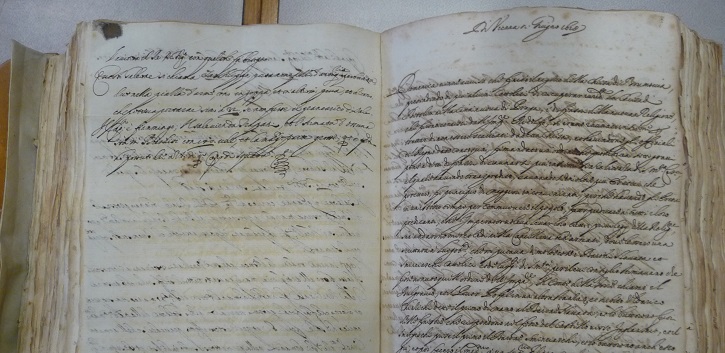Irish research finds lost news world in Medici Archives

Irish research is revealing an entirely lost news world in Florence’s Medici Archives.
In the 16th and 17th centuries early Modern Europe communicated by handwritten newsletters, which had been forgotten until now.
Brendan Dooley, Professor of Renaissance Studies at University College Cork (UCC), uncovered some 200 volumes of manuscript newsletters in the vast vaults of the Medici Family in Florence.
For four centuries these manuscript newsletters remained unused and unread, and they are revealing an information network from Florence to Warsaw, from Paris to Madrid, from the Netherlands to Britain, Ireland and the American colonies.
“News at this time was handwritten and exchanged across Europe in what was a lucrative and powerful network. Who controlled the news, controlled the power and this is a discovery at the very birth of what is today’s global news industry” commented Professor Dooley.
@UCC historical researchers find hundreds of centuries-old newsletters in Medici vaults | https://t.co/LeVVDwlADb https://t.co/MgBS69B6NM@UCCHistory #history #archives #twitterstorians
— History at UCC (@UCCHistory) July 20, 2019
“In an era of streaming videos, YouTube, Twitter, Facebook and around-the-clock news updates sent directly to smartphones, it is getting harder to remember when news was something one read once or twice a week.”
Recently Professor Dooley was awarded €1 million by the Irish Research Council to further this research. The funding was made under the Irish Research Council's Advanced Laureate Awards, which are for established, leading principal investigators who want funding to pursue ground-breaking research.
“Our ultimate goal, made feasible for the first time by this funding, is to reconstruct this fascinating news environment of an entire lost world, early modern Europe, at the birth of news.”
Irish history is revealed in the manuscript newsletters, including;
A newsletter from Venice dated 19 March 1588 carried news about the Spanish Armada setting sail:
“[. . .] It was heard from Lisbon that the armada was ready with 140 or more sailing ships, and 8 months of provisions; and it was said that it would set sail toward the end of this month with 17,000 combat soldiers and 8000 sailors. It was not known where it would be directed—some said it would go to join the duke of Parma, while others said it would sail for Ireland.”
A 1606 newsletter from Spain which reports on a large number of Irish emigrating to Galicia in order to flee an edict against Catholics that was published in Ireland.
A 1607 newsletter from Brussels reports on a tipoff from Paris about the arrival in France of Hugh O'Neill, the Earl of Tyrone, who was escaping from Ireland trying to reach Spain.
In 1648, handwritten newsletters around Europe showed plenty of news about Ireland, including reports in January and February regarding the progress of the O’Neill forces up to the gates of Dublin, as well as ill-paid English soldiers joining the Catholics for better treatment.
Also in 1648 reports circulate about Thomas Wentworth’s role in fomenting the Irish rebellion. By April the Irish Protestants are reported to be threatening to abandon the country unless the English did more to protect them. In June of the same year, Giovanni Battista Rinuccini, the Papal nuncio in Ireland, is presenting Pope Innocent X with standards taken by the Irish rebels in recent battles.
European news is also widely reported with one Vienna newsletter of the 2 June 1618 announcing the spark that ignited the Thirty Years' War.
Professor Dooley’s team will be working closely with the State Archives in Florence, as well as the Medici Archive Project organisation, a nonprofit institution based in Florence and New York, to implement a systematic extraction method for the documentation and to connect the dots in an expanding pattern of exchanges.
For more on this story contact:
Eoin Hahessy, Head of Media, UCC - +353 (0)86 046 8950/ eoin.hahessy@ucc.ie
